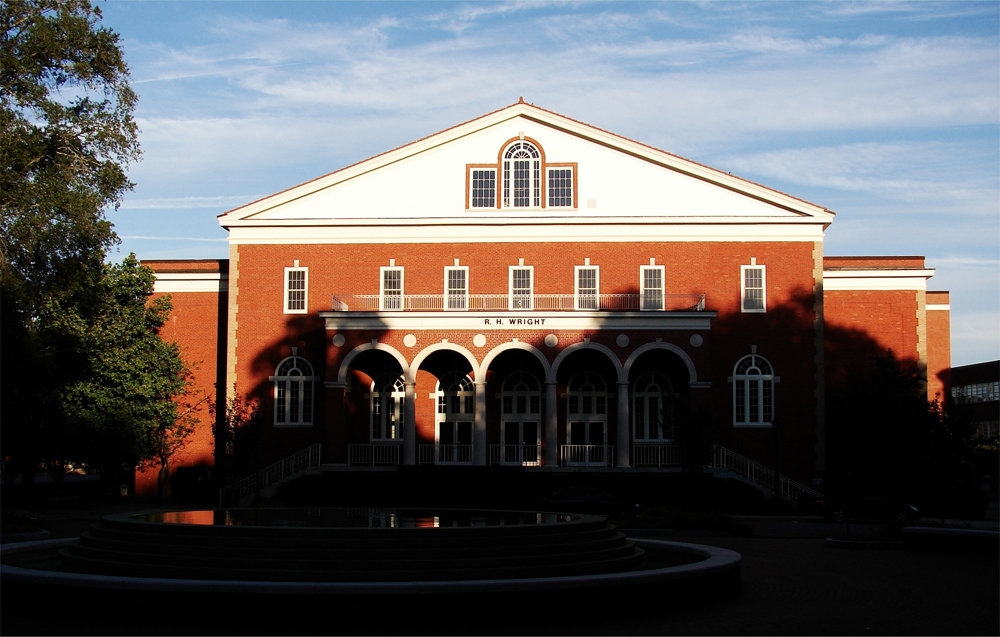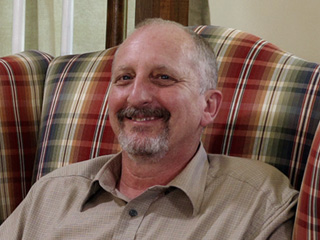REAL News for REAL People
East Carolina University
Publisher's note: We believe the subject of history makes people (i.e., American people) smarter, so in our quest to educate others, we will provide excerpts from the North Carolina History Project, an online publication of the John Locke Foundation. This sixteenth installment, by Jonathan Martin, is provided courtesy of the North Carolina History Project.
Greenville native Thomas J. Jarvis, governor of North Carolina after Zebulon Vance, sought to start a school in his home city in the early 1900s. With the approval of the North Carolina General Assembly, Jarvis was able to establish the East Carolina Teachers Training School in Greenville in the year 1907. The main reason for the school's location was the fact that Pitt County residents offered a significant tract of land and $100,000 to the new school.
The East Carolina Teachers Training School opened on October 5, 1909, with president Robert H. Wright guiding the infant school. Serving from 1909 until 1934, President Wright secured the school's first four-year study program in 1920, and a year later the school became the East Carolina Teacher's College. By the start of the 1930s, the college incorporated a Masters of Arts program.

Wright Memorial Auditorium, named for Robert H. Wright, located on the campus of ECU: Above. photo by Stan Deatherage Click the picture to expand to as much as 1000 pixels wide within most expanded images, and then push the arrows embedded in the center edge of the play-box to access the gallery, and slide new images into viewing within the center of the screen.
The next president of East Carolina Teacher's College, Leo W. Jenkins, proved as successful as his predecessor. Jenkins, who served as president from 1960 to 1978, solidified the institution as "a doctorate-granting university of national stature" (Powell, p. 368). Student enrollment tripled its size, and Laura Leary became the first African-American student to graduate from the college in 1963. The Schools of Business, Music, Nursing, as well as the Schools of Allied Health and Social Professions came into existence in the late 1960s. One of Jenkins's lasting contributions to East Carolina was the institution of the School of Medicine in 1974.
In 1967, East Carolina Teacher's College became known as East Carolina University (ECU), and in 1972, the university joined in the University of North Carolina System of Higher Education. Today, ECU is the third largest university in the UNC-Higher Education system.

East Carolina football on a Saturday evening at dusk in 2004: Above. photo by Stan Deatherage
Offering over 100 undergraduate degrees and 85 graduate programs, ECU enrolls over 20,000 students. According to Powell, The School of Medicine has become "a pioneer in robotic surgery and telemedicine." In addition, ECU boasts in over 123,000 alumni, and some famous graduates include actress Sandra Bullock, NFL player David Garrard, BB&T Chief Executive Officer Kelly King, and founder of the Golden Corral Restaurant chain James Maynard.
Sources:
"East Carolina University." William S. Powell, ed. Encyclopedia of North Carolina (University of North Carolina Press: Chapel Hill, NC 2006).
"East Carolina University." North Carolina Highway Historical Marker Program website. A Division of the North Carolina Department of Cultural Resources. (accessed January 23, 2012).
"ECU at a Glance." East Carolina University website. http://www.ecu.edu/cs-admin/mktg/points_east_facts.cfm, (accessed February 6, 2012).
Go Back
Greenville native Thomas J. Jarvis, governor of North Carolina after Zebulon Vance, sought to start a school in his home city in the early 1900s. With the approval of the North Carolina General Assembly, Jarvis was able to establish the East Carolina Teachers Training School in Greenville in the year 1907. The main reason for the school's location was the fact that Pitt County residents offered a significant tract of land and $100,000 to the new school.
The East Carolina Teachers Training School opened on October 5, 1909, with president Robert H. Wright guiding the infant school. Serving from 1909 until 1934, President Wright secured the school's first four-year study program in 1920, and a year later the school became the East Carolina Teacher's College. By the start of the 1930s, the college incorporated a Masters of Arts program.

The next president of East Carolina Teacher's College, Leo W. Jenkins, proved as successful as his predecessor. Jenkins, who served as president from 1960 to 1978, solidified the institution as "a doctorate-granting university of national stature" (Powell, p. 368). Student enrollment tripled its size, and Laura Leary became the first African-American student to graduate from the college in 1963. The Schools of Business, Music, Nursing, as well as the Schools of Allied Health and Social Professions came into existence in the late 1960s. One of Jenkins's lasting contributions to East Carolina was the institution of the School of Medicine in 1974.
In 1967, East Carolina Teacher's College became known as East Carolina University (ECU), and in 1972, the university joined in the University of North Carolina System of Higher Education. Today, ECU is the third largest university in the UNC-Higher Education system.

Offering over 100 undergraduate degrees and 85 graduate programs, ECU enrolls over 20,000 students. According to Powell, The School of Medicine has become "a pioneer in robotic surgery and telemedicine." In addition, ECU boasts in over 123,000 alumni, and some famous graduates include actress Sandra Bullock, NFL player David Garrard, BB&T Chief Executive Officer Kelly King, and founder of the Golden Corral Restaurant chain James Maynard.
Sources:
"East Carolina University." William S. Powell, ed. Encyclopedia of North Carolina (University of North Carolina Press: Chapel Hill, NC 2006).
"East Carolina University." North Carolina Highway Historical Marker Program website. A Division of the North Carolina Department of Cultural Resources. (accessed January 23, 2012).
"ECU at a Glance." East Carolina University website. http://www.ecu.edu/cs-admin/mktg/points_east_facts.cfm, (accessed February 6, 2012).
| Myrtle Beach's Best Time of the Year ... Shhhhhh: Part II | NC Past, In the Past, Body & Soul | Outer Banks |
Latest Body & Soul
|
The campaign for former President Donald Trump released a statement Saturday afternoon condemning the White House’s declaration of Easter Sunday as “Transgender Day of Visibility.”
Published: Thursday, April 4th, 2024 @ 1:31 pm
By: Daily Wire
|
|
He is risen!
Published: Saturday, March 30th, 2024 @ 8:06 pm
By: Stan Deatherage
|
|
The great misnomer for non Christians that the day Jesus Christ was executed by occupying Romans, celebrated by Christians as "Good" Friday, must be a paradox of ominous proportions.
Published: Saturday, March 30th, 2024 @ 7:52 pm
By: Stan Deatherage
|
|
The North Carolina Department of Health and Human Services is launching a Community Partner Engagement Plan to ensure the voices of North Carolina communities and families continue to be at the center of the department’s work.
Published: Tuesday, March 26th, 2024 @ 2:43 pm
By: Eastern NC NOW Staff
|
|
The North Carolina Department of Health and Human Services will host a live Spanish-language Cafecito and tele-town hall on Tuesday, Feb. 27, from 6 to 7 p.m., to discuss how to support and improve heart health as well as prevent and manage heart disease.
Published: Saturday, March 23rd, 2024 @ 8:56 pm
By: Eastern NC NOW Staff
|
|
Part of ongoing effort to raise awareness and combat rising congenital syphilis cases
Published: Saturday, March 23rd, 2024 @ 6:18 pm
By: Eastern NC NOW Staff
|
|
Recognition affirms ECU Health’s commitment to providing highly-reliable, human-centered care
Published: Wednesday, March 20th, 2024 @ 10:47 pm
By: Eastern NC NOW Staff
|
|
The North Carolina Department of Health and Human Services is launching a new Statewide Peer Warmline on Feb. 20, 2024. The new Peer Warmline will work in tandem with the North Carolina 988 Suicide and Crisis Lifeline by giving callers the option to speak with a Peer Support Specialist.
Published: Wednesday, March 20th, 2024 @ 1:29 am
By: Eastern NC NOW Staff
|
|
A subsidiary of one of the largest health insurance agencies in the U.S. was hit by a cyberattack earlier this week from what it believes is a foreign “nation-state” actor, crippling many pharmacies’ ability to process prescriptions across the country.
Published: Tuesday, March 5th, 2024 @ 1:12 am
By: Daily Wire
|
|
The John Locke Foundation is supporting a New Bern eye surgeon's legal fight against North Carolina's certificate-of-need restrictions on healthcare providers.
Published: Monday, March 4th, 2024 @ 11:08 am
By: Carolina Journal
|
|
Shia LaBeouf received the Sacrament of Confirmation, completing his conversion to Catholicism, on Sunday, and the actor’s confirmation sponsor suggested LaBeouf may become a deacon “in the future.”
Published: Sunday, March 3rd, 2024 @ 2:58 pm
By: Daily Wire
|
|
The North Carolina Department of Health and Human Services today released the following statement on the Trails Carolina investigation:
Published: Sunday, March 3rd, 2024 @ 12:19 pm
By: Eastern NC NOW Staff
|
|
The North Carolina Department of Health and Human Services today released a draft of its 2024-25 Olmstead Plan designed to assist people with disabilities to reside in and experience the full benefit of inclusive communities.
Published: Sunday, March 3rd, 2024 @ 11:36 am
By: Eastern NC NOW Staff
|
























